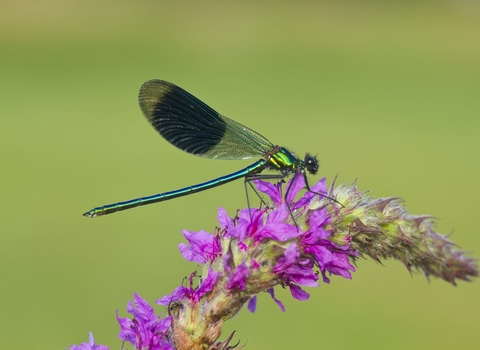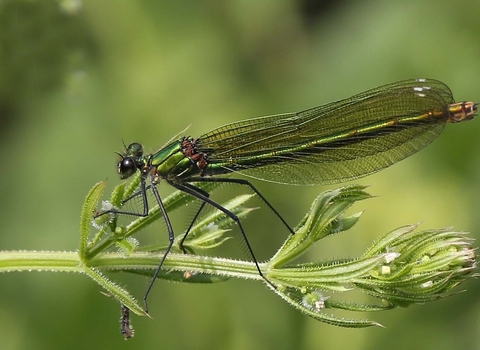
Male Banded Demoiselle ©Mark Hamblin/2020VISION

Female Banded Demoiselle ©Margaret Holland
Banded demoiselle
The Banded demoiselle can be seen flitting around slow-moving rivers, ponds and lakes. The males are metallic blue, with a distinctive dark band across their wings, and the females are a shiny green.
